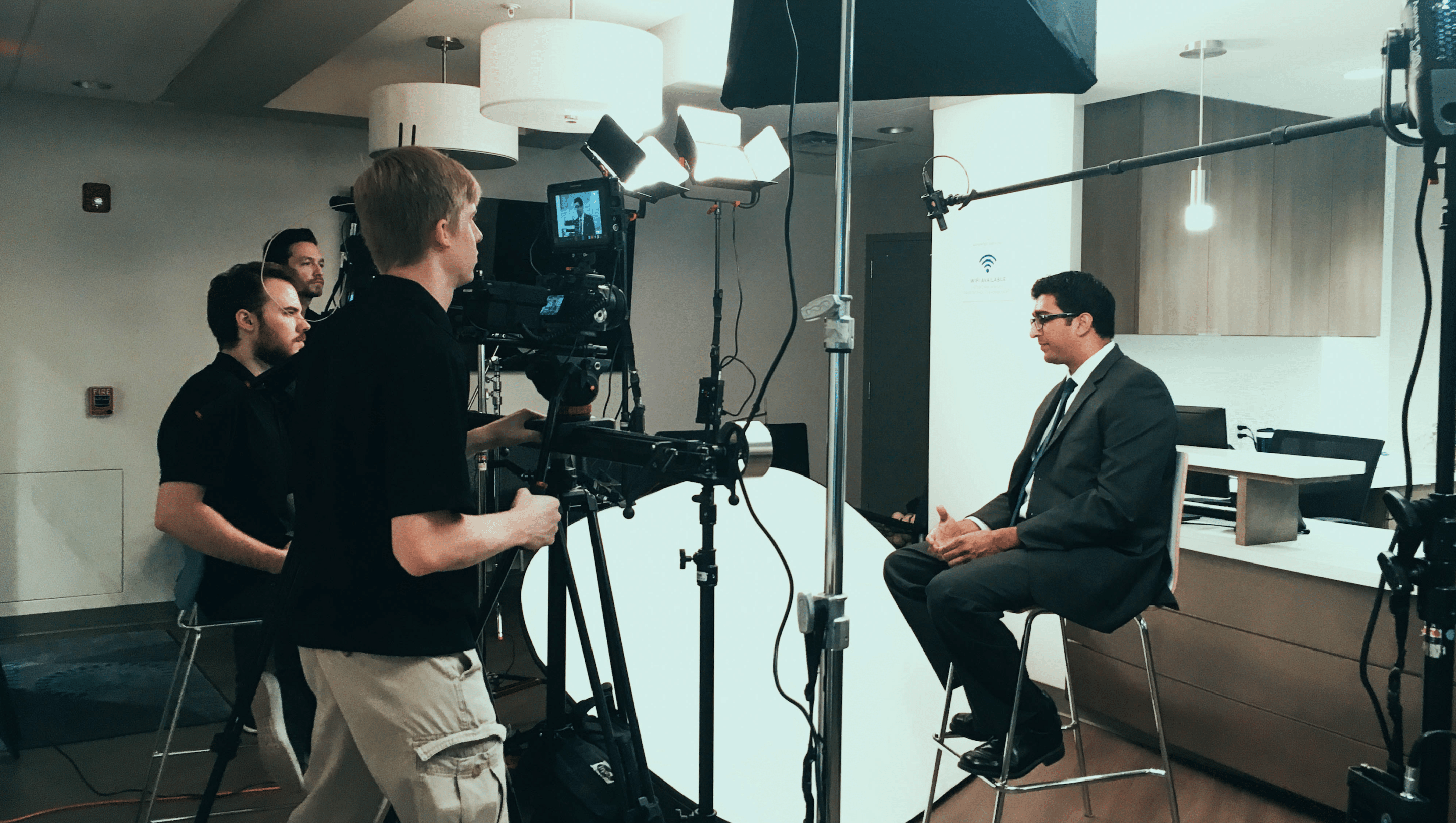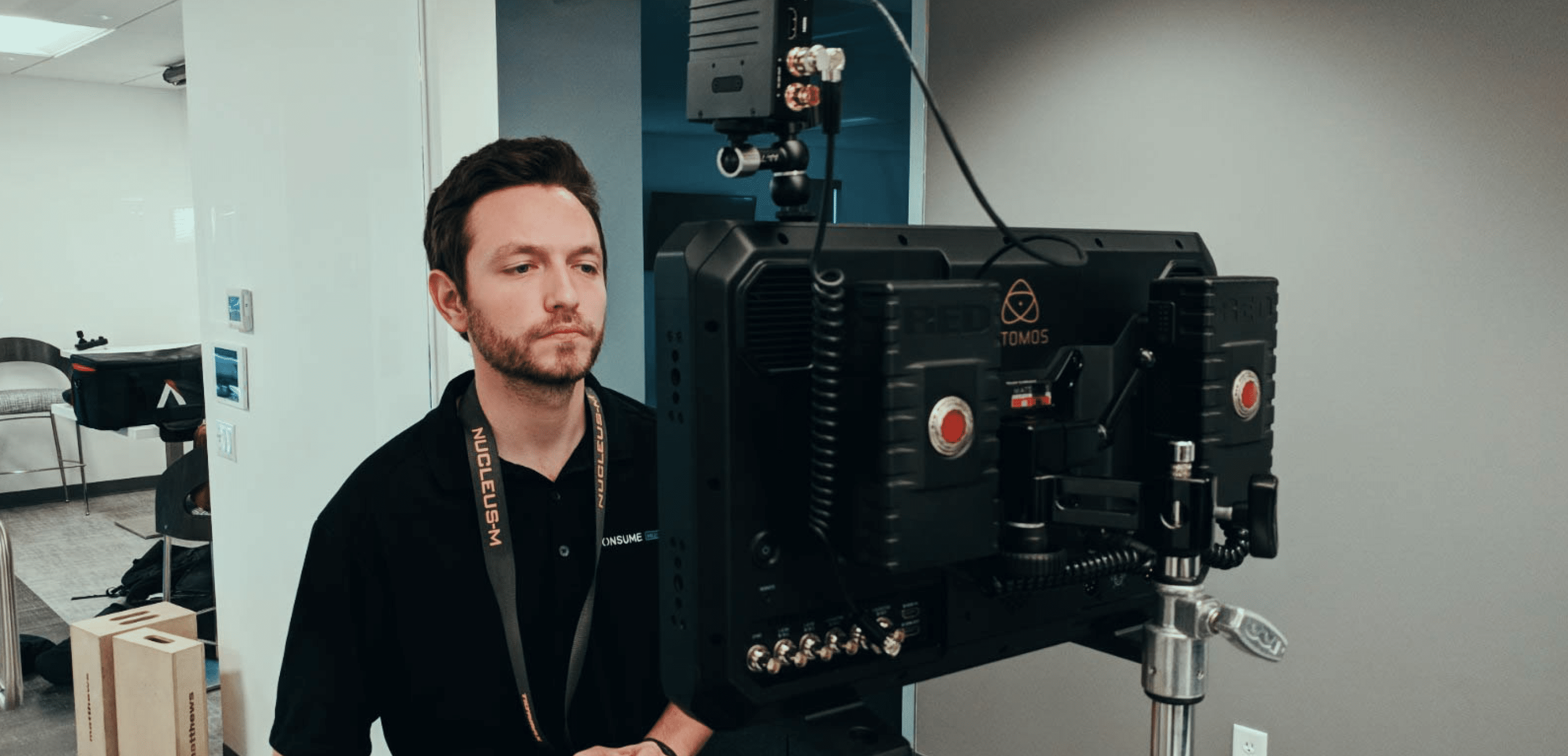The Video Production Process in 5 Steps
April, 15 2020
Steps of Production
What is the Video Production Process?
If producing high quality videos was simple, everybody would do it. Honestly even that simple phrase is extremely complicated. For example – what lights should we be using? How many lights? And what lighting modifiers? What camera makes sense for this shoot? What lens are we using for this particular shot? What stabilizers do we need to use to match the style we’re going for?
These are just a few of the hundreds of questions that we must ask ourselves before going on-set. In a fantasy land, we could just point a camera at our subject and everything would turn out looking amazing. However that’s just not how it works on planet Earth in the year 2018.
The video production process is more than just a job- its a way of life. Professionals in the video industry view daily phenomenons such as lighting and audio completely different, because they directly affect the results of our job. Through continuous investment in equipment and education, we are able to provide our clients with premiere video services that achieve the very best marketing results.
Principal photography is the phase of the filmmaking process in which we film the video, with actors on set and cameras rolling. The principal photography phase makes up the shortest, but most intense, portion of the overall video production process. In this article we will teach you some of the key factors to think about when on set, and how they can affect your end-product.
Arrive. Load. Build.
Our team arrives with various cameras, lenses, stabilizers, lighting, power, & audio equipment. Each type of equipment requires time for set-up and must be also be tested before being used on set. Each of these items play an essential role on set.

Cameras and Lenses
Lenses are the glass mechanism that attaches to the camera body. Lenses are responsible for the sharpness and depth of field created in each shot. We shoot with only the highest-quality lenses in order to provide our clients with the most cinematic and professional looks. Lenses can be easily swapped during production, and you should expect to see this occur throughout each production as different scenarios are filmed. Certain lenses allow us to zoom, while others are fixed, or ‘prime’. Each lens has a different focal length, which allows us to easily change-up whether a shot is wide, medium, or close-up without having to move the camera’s location drastically.
Stabilizers
Drone – Everyone in the film-making world (and the consumer world for that matter) is talking about the drone. This flying stabilizer allows video producers to obtain shots that were once only attainable through expensive helicopter rentals and aerial permits. Now that these devices have become readily available for film-makers, we are able to capture dynamic aerial HD footage simply by standing in one location, while operating a remote control. So cool. We have used drones during production on many occasions – including over construction sites, office parks, and rivers.
Gimbal – Another technological wonder (aka ‘toy’) that producers are falling in love with is the gimbal. This piece of equipment is a new-age version of a ‘SteadiCam’, which allows for extremely stable footage while walking through three-dimensional space. Gimbals take time to build and balance, but once it is operating- it is an extremely flexible tool that drastically increases the production value of the footage.
Slider – Sometimes you wouldn’t know the impact of a stabilizer until you see it on screen. A slider is a tool that looks simple in real-life, but creates an extremely dynamic look. This simple tool moves the camera consistently along a horizontal plane – think of it as a miniature, straight dolly. This tool can be great for reveals, easing-in (or out), along with providing a more dynamic look to otherwise static footage.

Lighting
There are many aspects of lighting – color temperature, strength, direction, diffusion and more. By using all of these different modifying aspects, we are able to manipulate light and use it to our advantage. Small tips, like remembering that the sun is a different color than your lightbulbs in your office, will help prevent your employees from looking like ‘two-face’ on camera. Needless to say, it’s always critical to have the ability (and time) to control the lighting situation as much as possible.
Audio
The most important factor when recording audio is the room that you are recording in. Ideally, we want to record in a space that contains no echo, as this will be heard loud and clear in the final video. It’s also crucial to cut out as much background noise as possible. Whether it is a refrigerator, an air conditioning unit, or people talking in the hallway – all of this will ultimately be heard in the background of the audio track. Similar to lighting, we can control sound by utilizing sound-proofing barriers or thick mobile quilts to improve audio recording in any room.
Last But Not Least
Some clients want to have control of entire situation, but most times it is best to trust your production team to handle the job. If you’ve made it this far, that means you’ve also successfully completed the pre-production process. The pre-production process takes care of the extraneous details so that come shoot-day, everyone knows exactly what we are trying to accomplish.
Now that you understand the process, sounds easy – right? Wrong! It truly takes a dedicated and professional video team to achieve the results you are looking for. At Consume Media, we have more than a decade of experience producing videos for brands just like yours. We have heavily invested in modern production equipment, and have the experience to take your production to the next level. Hungry for more? Check out our blogs on pre-production and post-production.
Interested yet?
Let's Chat.


